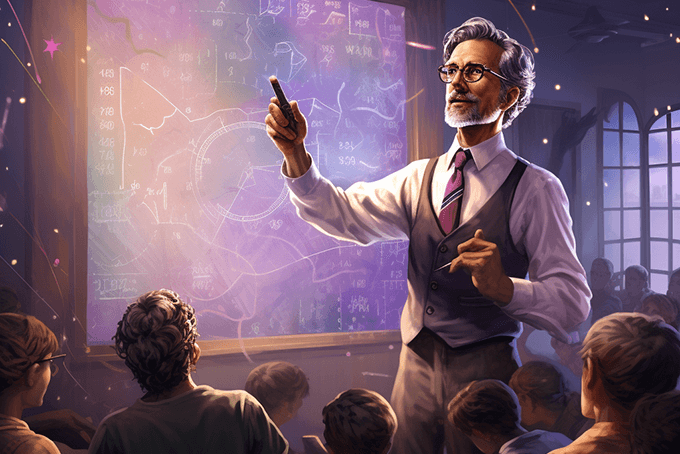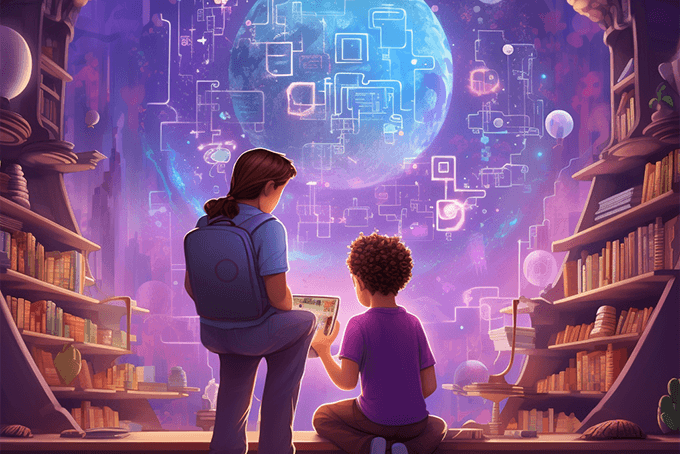One way to substantially raise standards across the board is to identify and tap into learning capacities of students that are not already being used. Natural learning (formerly “brain based learning” as we originally defined it) is beautifully positioned to provide guidance. The reason? Natural learning takes for granted that a learner is a whole person – a living system – and that every aspect of a person contributes to his or her learning. Body, brain, and mind are all interacting (though they may not be operating every effectively). What does this mean in practice? Let’s look at basic math as an example. We will take it step by step, from the very general to the quite specific.
Natural Learning Takes Place Continuously
First, learning was happening way before schools were ever invented. Natural learning is all about making sense of life experience. This applies to astronauts in space, adolescents in malls, office workers in cities, and kids in school. All of us, all the time, are basically trying to make sense of what is happening to us so that we can survive and thrive.
Second, math is everywhere! Math is part of the natural world of everyday experience. I am writing this at a table in a restaurant in Idyllwild, in the mountains of Southern California. The tables, the outdoor deck, the doors and windows, the sidewalks, and every other aspect of this environment is geometry come to life. Parallel lines, rectangles, circles and elipses, inclined plains . . . the list is endless. All the meals on the menu consist of ingredients that have been weighed, measured in different ways, counted, combined, separated, divided and rearranged. Basic arithmetic infuses the entire dining experience, from preparation to paying the bill. And this is just a beginning.
Third, take advantage of natural learning to help a child (say) grasp some aspect of math by making sense of his/her natural immersion in math.
I have selected three principles to focus on.
- Learning is physiological. Senses, movement, and action are crucial.
- The search for meaning is innate. Each one of us automatically seeks to make sense of what is happening. It’s just that we want to make sense of what WE think is important, and not (usually) what our teachers and parents think is important.
- The brain/mind is social. Whether we like it or not, everyone of us is both a unique individual and a social animal.
This, then, is how a “lesson” might work.
My (imaginary) family is with me. Across the road from where we are in the restaurant is the Idyllwild monument – a magnificent wooden carving that combines a bear, mountain lion, condor, and other animals that have inhabited this land. People are taking photographs, and a family is crowding onto the platform used for photo ops.
I see this and might say to my daughter Jenny “Look over there. They’re taking photos of the monument, and it looks like they’re all trying to stand in the same place.” If this triggers any interest (because my job is to activate her interest so that she wants to explore and understand) I could say, “let’s go over there and see how many can fit on the step.” (of course, she could make that suggestion). So we move. Our bodies and senses work together in a real world moment. We all leave our meal for a moment, cross the road, look up at the monument and the step. I could say, “Hmmm . . . there are too many of us to fit on this. We’ll have to divide into two groups. How many should there be in each?” And so we delve into working with numbers and division in action.
Note something important here. I used the word “divide” without defining or explaining it. I might continue like that, or I might explain it. That’s how a lot of learning works. Language, culture, and many other things are “picked up” to some extent just by being incorporated naturally into a meaningful social situation. Of course, there may be directed classes or sessions at other times in which Jenny will be explicitly coached to work with numbers and processes such as multiplication and division. In many of them she will take the lead with her questions and interests. But all the time, part of the skill is to link these more formal sessions with her real world experiences.
I know I’ve made it appear overly simple, and there is a lot more to using natural learning. Each principle covers a great deal of territory, and mastering the ways in which they all work together takes time and thought and practice. So Renate and I will be unpacking and talking about all this in the posts to come.
The point is that the “standards” all appear in real life in many ways. And the body/brain/mind is designed to make sense of real life experience. So the more we grasp those two facts, the better equipped we are to channel natural learning capacities into helping students master the stuff of the curriculum. And it’s basically a lot more fun (though sometimes very challenging) taking advantage of doing what comes naturally.



